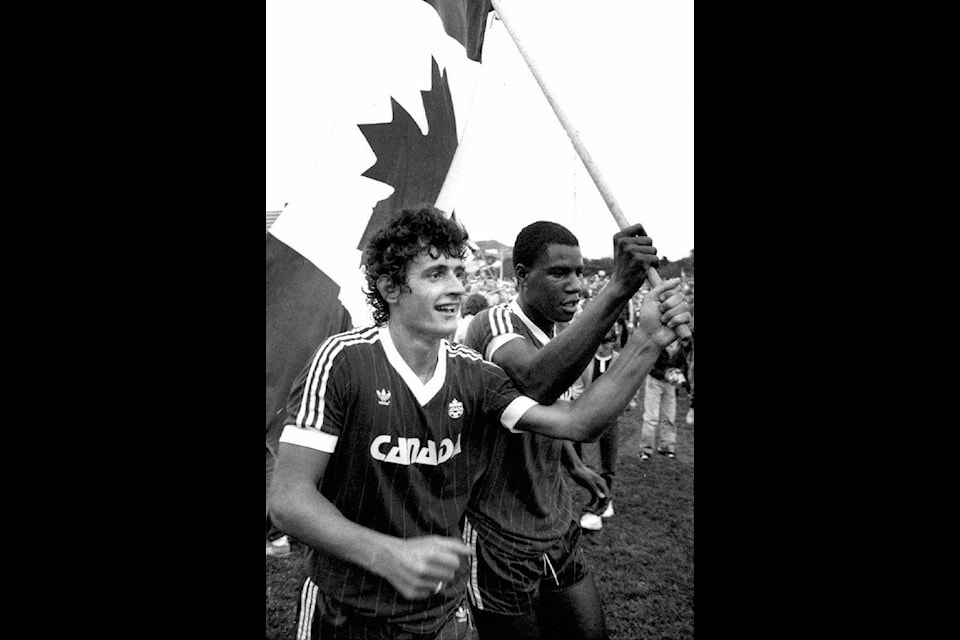When Atiba Hutchinson and others banged the big drum on the pitch of BMO Field in Toronto on a snowy afternoon last March, it signified the end of a 36-year drought for Canada on the global soccer stage.
For the first time since 1986, the country was sending a team to the sport’s most prestigious stage: The FIFA World Cup.
At his home in Campbell River, some 4,000 kilometres away, Ken Garraway knew exactly how the team felt. After all, Garraway had his own afternoon, with rain and wind replacing snow, on a pitch in St. John’s on Sept. 14, 1985.
“It was windy, cold and rainy,” Garraway says. “Newfoundlanders are great people. They were 100 per cent behind us. When we went into that game, we felt we had an advantage. We had this home field advantage in this wet, rainy cold. When the final whistle went, we felt that Newfoundland had represented the entire country, we all celebrated together. It was a pretty emotional time to qualify there.”
Garraway, who played as a forward with 22 caps for the national team, almost didn’t play soccer. In his youth, his aspirations were firmly invested in another ball sport.
“We couldn’t play until we were nine, in those days,” said the 65-year-old. “I was recruited to play for Lakehill soccer, by a gentlemen named Scotty Weir. I was walking home in my baseball uniform, covered in dirt when Scotty asked me to kick the ball with some of the youth club in the area. When he took me home, he asked my parents if he could recruit me to the youth rep team.”
Garraway worked his way up, competing for several teams in the Western Soccer Alliance in the mid-1980s. In 1984, he achieved his big break, when Canada attempted to qualify for the Los Angeles Olympics.
“We fielded a purely amateur team in our first qualifying game versus Bermuda,” Garraway says. “At that point, the IOC said any professional could play for a country who hadn’t qualified for a World Cup. Tony Waiters and Bob Bearpark held a camp in Victoria, with around 40 players. Most amateurs didn’t feel we could get to the next level competing for spots against professionals. However, only myself and Craig Martin managed to continue with these professionals.”
Garraway scored a goal in qualifying for the Olympics in the 15th minute on the second leg of a home-and-home with Mexico. Losing that game 2-1, Canada followed with a win in a neutral site rubber match to get them to the Olympic Games, where they made the quarter-finals.
“That was huge, because Mexico was a top country at that point,” Garraway says. “We went on to play Cuba, Costa Rica, but Mexico was the biggest hurdle.”
It was a hurdle which catapulted Canada to the CONCACAF Championship a year later in St. John’s, although they would lose all their games in the round robin at the World Cup. Losing to France, Hungary and the Soviet Union, Canada didn’t score a goal.
After the World Cup, Garraway was brought to Campbell River to coach the Wave, Campbell River’s then entry in the Vancouver Island Soccer League (VISL). After the team folded, Garraway began working with the city’s youth soccer programs, being promoted to a provincial coach in 2006, with several finishes on the podium from 2006 to 2012, with gold, silver and bronze finishes at the under-15 girls division in those years.
“It’s like a puzzle, getting people to perform at the highest level,” Garraway says. “Even if it doesn’t benefit the individual, it benefits the team. That’s what I stress to my players.”
He feels that this World Cup team will be more equipped to face the challenges in their group than they were in 1986.
“The next 4-5 years after, the CSA hadn’t done enough to take the work done by Tony and move it on. Our success was not based on technical strength, but tactical organization. We knew what our roles were. They had to build technique. We were not ready to be a possession-based team, which is where the world was moving. The youth were doing that, but the world wasn’t waiting for us either. Only in the last five or six years, that you saw us closing the gap.”
He feels that the impact of Canada’s qualifying will benefit the future youth, and in doing so, the future of Canadian soccer.
“When we talk to some of these players, they are 14, we’re overwhelmed how much they know about the sport. I think it will have a huge impact at getting players to the top level. The challenge now, is the professional clubs are the ones who develop the players now,” Garraway says. “The World Cup will have a huge impact in motivating players to get to the top level.”
Canada kicks off in Qatar against Belgium today.



